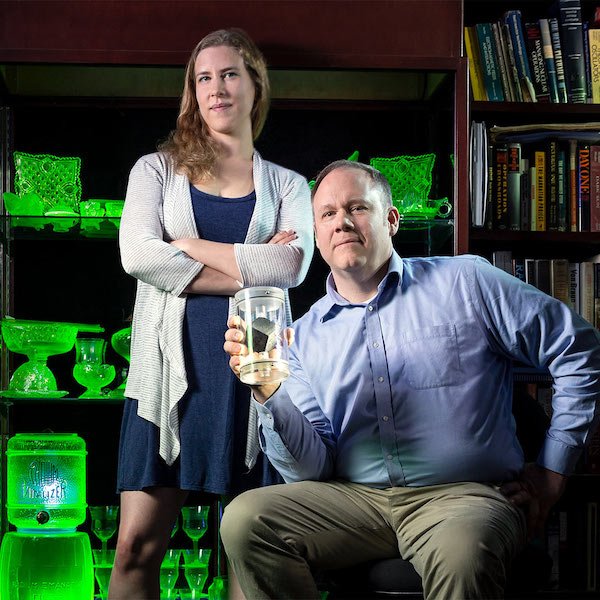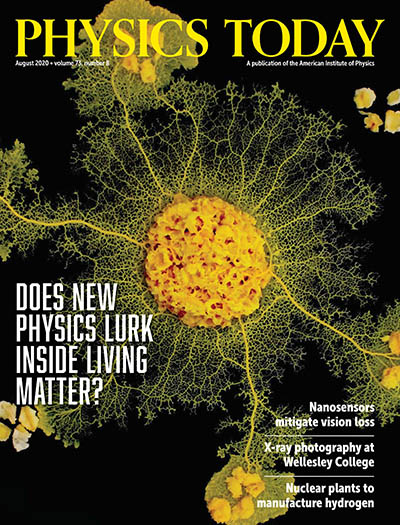In 2013 Timothy Koeth of @UofMaryland received a metal cube with a note: “Taken from the reactor that Hitler tried to build. Gift of Ninninger.” The story of that uranium cube, by Koeth and Miriam Hiebert, is in the May issue of PT doi.org/10.1063/PT.3.4… (thread) 

@UofMaryland The cube is one of 664 that, during World War II, were strung together to form a “chandelier” that was to comprise the core of a nuclear reactor in Haigerloch, Germany. The leader of that experiment: Werner Heisenberg 

@UofMaryland In 1944 a group of American soldiers and scientists—the Alsos team—joined the front lines in Europe to gather information on the German nuclear program. In April 1945 they found Heisenberg’s lab, its entrance underneath a castle 

@UofMaryland Heisenberg had already fled by bicycle with some of the cubes. After interrogating the remaining German scientists, the Alsos team found and dug up the rest of the uranium blocks in a nearby field 

@UofMaryland Approximately 400 additional cubes, of the exact size and shape of the Haigerloch ones, were used in another abandoned reactor experiment in Gottow, led by Kurt Diebner 

None of the German experiments created a working nuclear reactor. But had Heisenberg and Diebner pooled their cubes, it’s possible they would have been successful
So what happened to all those cubes? Some may have been brought to @ORNL for processing. Others may have been sold on the black market. The whereabouts of only a handful are known today
@ORNL Koeth’s cube, he and Hiebert learned, was most likely from Robert Nininger, who worked with the Manhattan Project in NYC around the time that the Alsos team seized the cubes
@ORNL PT tracked down some other cubes, mostly in Germany and the US physicstoday.scitation.org/do/10.1063/PT.… At least two are on display: At the Atomkeller museum in Haigerloch (at the site of Heisenberg’s lab) and at the @UniBonn Mineralogical Museum 

@ORNL @UniBonn Do you have info about any of these uranium cubes? Let Koeth/Hiebert (uraniumcubes@umd.edu) and us (pteditors@aip.org) know! #histSTM 

Photo credits: Cynthia Cummings/PT; AIP Emilio Segrè Visual Archives (4); Vitold Muratov, CC BY-SA 3.0; John T. Consoli/UMD (end thread)
• • •
Missing some Tweet in this thread? You can try to
force a refresh









